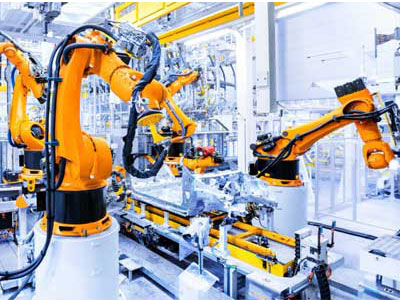Key Takeaway
The principle of industrial robots revolves around automation and precision. These robots are programmable machines designed to perform specific tasks with high accuracy. The key component is the controller, which acts as the robot’s brain. It processes instructions and controls the robot’s movements. Sensors provide real-time feedback, ensuring the robot adjusts its actions as needed. This allows industrial robots to handle repetitive tasks, like assembly or welding, with consistency and efficiency. By automating these tasks, industrial robots enhance productivity and reduce human error, making them essential in modern manufacturing.
Basic Working Principles
At their essence, industrial robots function through a combination of mechanical movements and electronic controls. They are equipped with articulated arms or gantries that mimic human motion, allowing them to perform tasks with precision and speed. These robots are programmed to execute specific sequences of movements, enabling them to handle tasks such as welding, painting, assembly, and intricate tasks like microelectronics manufacturing. With advanced sensors and AI integration, these robots can adapt to various industrial applications, enhancing productivity, consistency, and safety in manufacturing processes.

Mechanical Design and Movements
Industrial robots are meticulously designed to meet specific operational demands, with their mechanical structure serving as a cornerstone for performance and durability. These robots typically employ lightweight yet robust materials such as aluminum or carbon fiber, striking a balance between strength and agility. This design choice not only ensures resilience under varying operational stresses but also facilitates swift movements essential for precision tasks.
The movements of industrial robots are orchestrated by sophisticated mechanisms powered by electric motors or hydraulic actuators. These components impart the requisite torque and precision necessary for manipulating objects with finesse. Whether it’s a welding robot on a production line or a collaborative robot in a warehouse, each movement is finely tuned to optimize efficiency and safety within its operational environment.
Control Systems and Programming
At the heart of every industrial robot lies its advanced control system, a complex network of software and hardware that governs its every action. These systems are driven by intricate algorithms that dictate how the robot perceives its surroundings and executes tasks. Engineers adeptly program these robots using specialized interfaces like teach pendants or offline programming software, meticulously detailing each task to ensure seamless execution.
The programming languages used in industrial robotics range from proprietary languages tailored to specific robot models to more universal languages like Python or C++. This versatility allows engineers to customize robot behavior with precision, aligning operational workflows with exacting standards. The result is a seamless integration of robotic capabilities into industrial processes, enhancing productivity and operational efficiency across diverse sectors.
Sensor Integration
In the realm of industrial robotics, the seamless integration of sensors plays a pivotal role in enhancing operational efficiency and safety protocols. Sensors act as the eyes and ears of robots, enabling them to perceive and respond to their environment in real-time. These sensors are designed to detect a wide array of environmental cues such as proximity to objects, changes in pressure, and variations in temperature.
By harnessing this data, robots can dynamically adjust their movements and actions, thereby optimizing workflow continuity and minimizing downtime. For instance, proximity sensors allow robots to navigate through complex environments without colliding with obstacles, ensuring smooth and uninterrupted operations. Similarly, temperature sensors enable robots to monitor heat levels in machinery, preemptively detecting overheating and averting potential breakdowns.
Moreover, the integration of sensors goes beyond operational enhancements; it also significantly contributes to ensuring workplace safety. Motion sensors, for instance, detect the presence of personnel in close proximity to robotic arms or machinery, prompting immediate adjustments in robot behavior to prevent accidents. This capability is complemented by sophisticated safety mechanisms like emergency stop buttons and protective barriers, which serve as fail-safes in critical situations.
In essence, sensor integration not only boosts the productivity and efficiency of industrial robots but also establishes a secure working environment by mitigating risks associated with human-robot interactions. This symbiotic relationship between sensors and robotics underscores their indispensable role in modern industrial settings, where precision, adaptability, and safety are paramount concerns.
Safety Mechanisms
Safety is a cornerstone of industrial robotics, necessitating the implementation of advanced mechanisms to safeguard both personnel and equipment. In today’s manufacturing landscape, where automation is increasingly prevalent, ensuring a secure working environment is imperative.
Central to this endeavor are sophisticated safety mechanisms integrated into robotic systems. These mechanisms are designed to preemptively identify and mitigate potential hazards, thereby reducing the likelihood of accidents and injuries. One such mechanism is the emergency stop button, a crucial component that allows immediate cessation of robotic operations in response to unforeseen circumstances or safety breaches.
Additionally, protective barriers serve as physical safeguards, segregating human operators from active robotic zones. These barriers are strategically placed to prevent accidental contact with moving parts or equipment, thereby minimizing the risk of injuries during routine operations. Their presence not only complies with stringent safety regulations but also instills confidence among personnel working alongside automated systems.
Furthermore, motion sensors play a pivotal role in enhancing safety protocols by continuously monitoring the surroundings for unexpected movements or intrusions. By detecting unauthorized access or sudden movements within designated safety zones, these sensors prompt automated responses that mitigate potential risks, ensuring a proactive approach to safety management.
Collectively, these advanced safety mechanisms contribute to fostering a secure working environment where human operators and automated systems can coexist harmoniously. By prioritizing safety through robust engineering solutions and proactive risk management strategies, industrial robotics uphold their commitment to operational excellence and workplace well-being.
Conclusion
Industrial robots rely on mechanical ingenuity, precise control, sensor integration, and robust safety protocols. Mastering these principles boosts productivity, quality, and workplace safety in various industries. As automation evolves, understanding these core concepts is crucial for both new and experienced engineers, driving innovation and efficiency. Focusing on these principles enables engineers to confidently navigate industrial robotics, shaping the future of automation through practical application and innovation.
